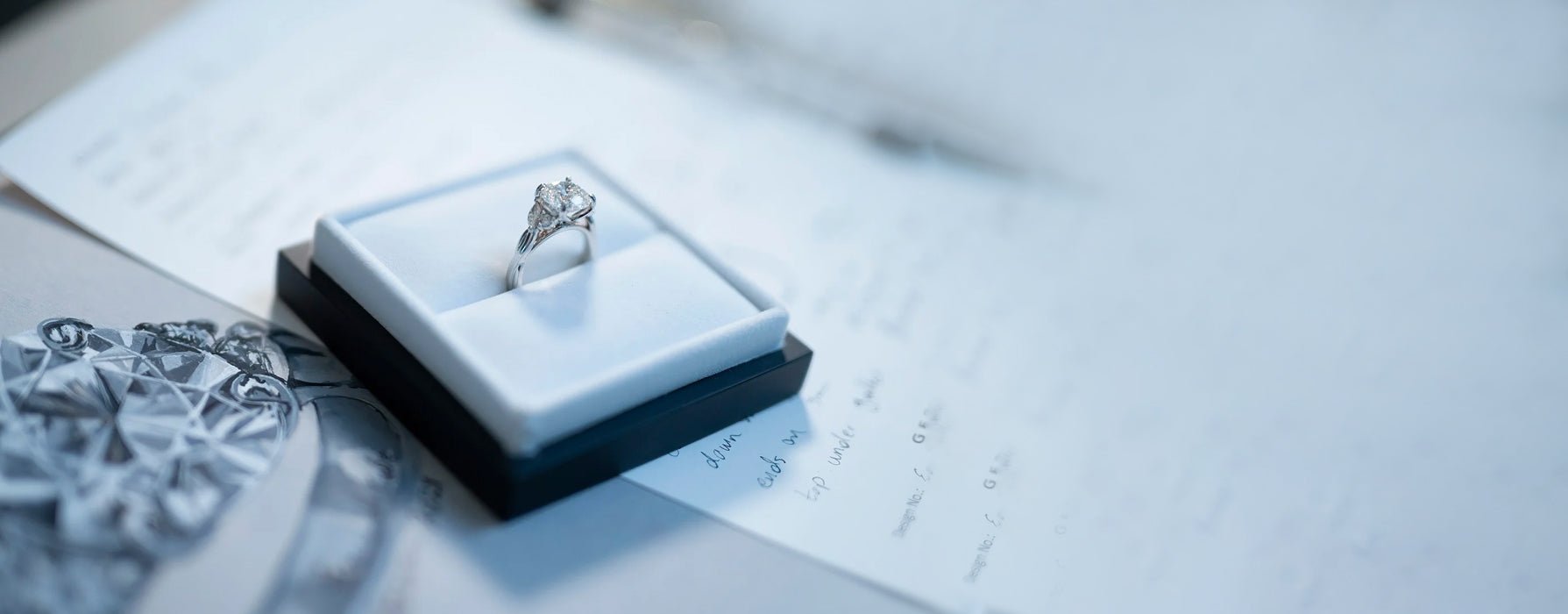
Colored diamonds / fancy diamond
What should you pay attention to when buying?
Only one in 10,000 diamonds has a natural color (natural colored diamonds) and is called a colored diamond. When buying colored diamonds, different criteria are important than when buying colorless diamonds. At Yorxs you will receive valuable information that will help you find the right color diamond for you.
The most important criteria when buying a colored diamond at a glance
Color
In general, colors such as red, pink, blue or green are very rare and therefore very valuable.
Orange diamonds with medium or strong intensity are also extremely rare.
In particular, pure colored diamonds, i.e. diamonds without overtones, are very rare.
intensity
The color intensity provides information about the saturation of the color. The more intense the color of the diamond, the rarer and more valuable it is. By treating the diamond, the saturation of the color can be increased. Artificially modified diamonds receive a note in the certificate and are less valuable than diamonds without treatment. Yorxs does not offer treated diamonds, only natural, untreated fancy colored diamonds .
Assessment of intensity
To assess the depth of the color, the respected US institute GIA has developed a nine-stage scale that ranges from “faint” to “fancy deep” . Diamonds with a weak intensity, such as faint, are just on the borderline of colorless diamonds. This in turn means that the color is barely visible. In fact, colors at intensities up to fancy can only be recognized upon close inspection. The four main intensity levels of colored diamonds are:
- fancy light,
- fancy,
- fancy intense
- and fancy vivid.
Sometimes you encounter another level of intensity: fancy dark or fancy deep.
Intensities for different colors
Not all colored diamonds exist in all intensities. Orange diamonds, for example, are only available in:
- fancy,
- intense,
- vivid
- and deep.
There are no different intensity classifications for black or red diamonds , so all red diamonds are fancy red and all black diamonds are fancy black.
overtone
Overtones often have a negative impact on the value of colored diamonds. However, if an overtone underlines the base color of a diamond, this can also have an increasing effect.

The different overtones of a colored diamond
The color of a diamond is defined by its primary color, overtone and intensity. Colored diamonds are rarely pure in color, but often have one or more overtones. To describe the color precisely, the certificate first states the overtone and then the primary color of the diamond (e.g. grayish greenish yellow). Overtones can have a greater or lesser influence on the color appearance of the fancy colored diamond. If a colored diamond has more than one overtone, the base color is usually less clearly visible. Overtones of diamonds can be yellowish, orange, brownish, greenish, bluish, reddish, pink, purple or grayish.
Overtones and the value of the colored diamond
Since pure colors are very rare, the value of a diamond without overtones is often higher than that of fancy colored diamonds with overtones. However, it is not possible to make a general statement as to which overtone is most valuable in combination with which color. In general, overtones that enhance or enhance the primary color have a positive effect on the value of the diamond. Overtones that affect or diminish the color reduce the value of the fancy diamond. For example, a pink diamond with a purple overtone is worth more than a pure pink diamond. However, a pink diamond with a brown overtone is less valuable.
carat
Of course, the same thing that generally determines the price of diamonds also applies to colored diamonds: the weight (the number of carats ). The more carats, the higher the value.
These factors determine the value of the diamond, so Yorxs recommends that you pay attention to these criteria first. You can then further narrow down your selection using the expanded criteria.
purity
The purity, i.e. the number of inclusions, is not quite as important for fancy diamonds as it is for colorless diamonds. In general, a higher purity also increases the value. The color makes inclusions harder to see than with colorless diamonds.
cut
The cut of a colored diamond should also be taken into account. The cut can influence the color of a diamond. The deeper the pavilion, the more light can penetrate the diamond. This often results in bolder colors. The shapes can also influence the color. Grinders have found that certain shapes make the color appear more intense. This in turn leads to higher prices per carat. When cutting a colored diamond, the color intensity is more important than the brilliance and fire of the stone, which are the focus of colorless diamonds. The reason for this is that the color and intensity are far more important for colored diamonds because, among other things, these determine the value of the diamond. Basically, the grinder is always motivated to get the best color effect out of the stone through the shape of the cut. The degree of grinding is therefore often not even specified in the certificates.
Our team is there for you!
Dear website visitors and customers, do you have any questions, requests or suggestions? Please call us (Tel.: 0800 8880770) .
You are also welcome to contact us at our email address (service@yorxs.de) .
We are available for you from Monday to Friday from 10 a.m. to 6 p.m. and Saturday from 10 a.m. to 3 p.m. Talk to us - we are always happy to help you.







